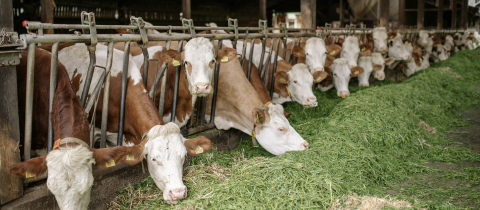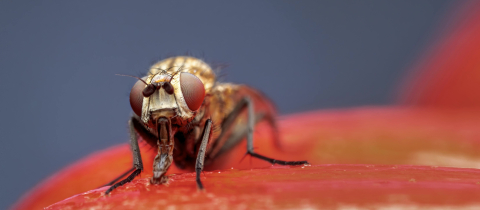A vaccine contains an attenuated or inactivated microorganism (or part of one) so that your immune system can prepare itself for an eventual infection. The content of the vaccine must be immunogenic, meaning that it will be recognized by your immune system, without being infectious, so that you don’t get the disease the vaccine is trying to protect you from. We often hear the phrase “inactivated vaccine”, but how exactly do scientists inactivate a virus or bacterium?
A common way of inactivating a live microorganism is to use formaldehyde (also known as formalin or formol). You may be familiar with it since this chemical is used to preserve organs and tissues in jars for display in medical museums and biology laboratories. The discovery of the inactivating powers of formaldehyde was purely accidental. In 1923, Barbara Hopkins and Alexander Glenny were developing a way to protect people against diphtheria. The disease is caused by a toxin made by a bacterium, and the scientists were keeping this toxin in containers that were too big to be sterilized in an autoclave, so they had cleaned them with formaldehyde. Lo and behold, they noticed that the toxin, in contact with the formaldehyde, had become much less infectious and could be given at one thousand times the normal dose to guinea pigs without killing them. (They still had to administer it with an antitoxin, but the transformation of the toxin itself was clearly spectacular.)
The way in which formaldehyde inactivates microorganisms and their toxins is by tying their shoe strings together, so to speak. Diphtheria toxin is a protein; also, viruses and bacteria are made up of building blocks, some of which are proteins. What formaldehyde does to proteins is to get them to bind to each other in weird, dysfunctional ways. It effectively inactivates microorganisms while preserving the sites that will be recognized by our immune system so that antibodies can be produced. However, our immune system is not as good at recognizing microorganisms that have been treated in this way, which is why inactivated vaccines are often given in multiple doses, or they require a booster shot many years later, or they contain adjuvants which help the immune system recognize the content of the vaccine.
Another way of inactivating viruses and bacteria is to apply heat. How does it work? A 2016 study on viruses that cause foodborne illnesses provided evidence that, at least in the case of one virus, heat inactivated the dangerous microorganism not by affecting its genetic blueprint but rather by damaging the shell of the virus (known as a capsid).
Once a virus or bacterium has been inactivated, it can be administered whole as part of a vaccine. Many of the hepatitis A vaccines available are examples of whole inactivated virus vaccines. In other cases, it’s an isolated protein from the virus or, as with diphtheria-containing vaccines, it’s the inactivated toxin itself, called a toxoid, that is given. Finally, some vaccines contain long, purified sugars from the microorganism, either on their own or bound to a protein that will trigger an immune reaction (as in the pneumococcal vaccine).







